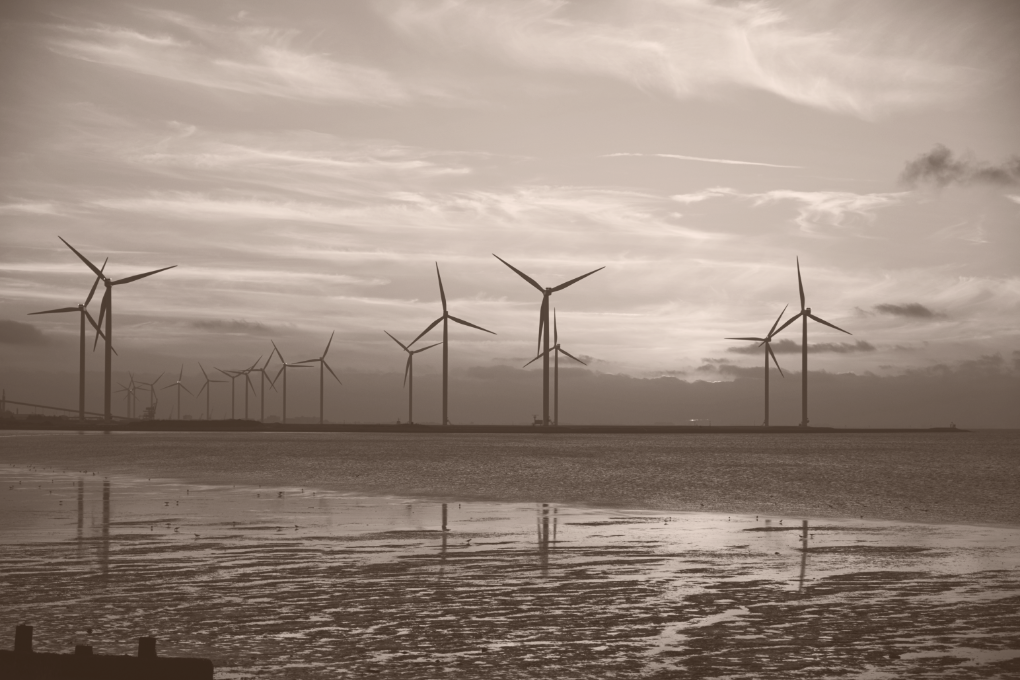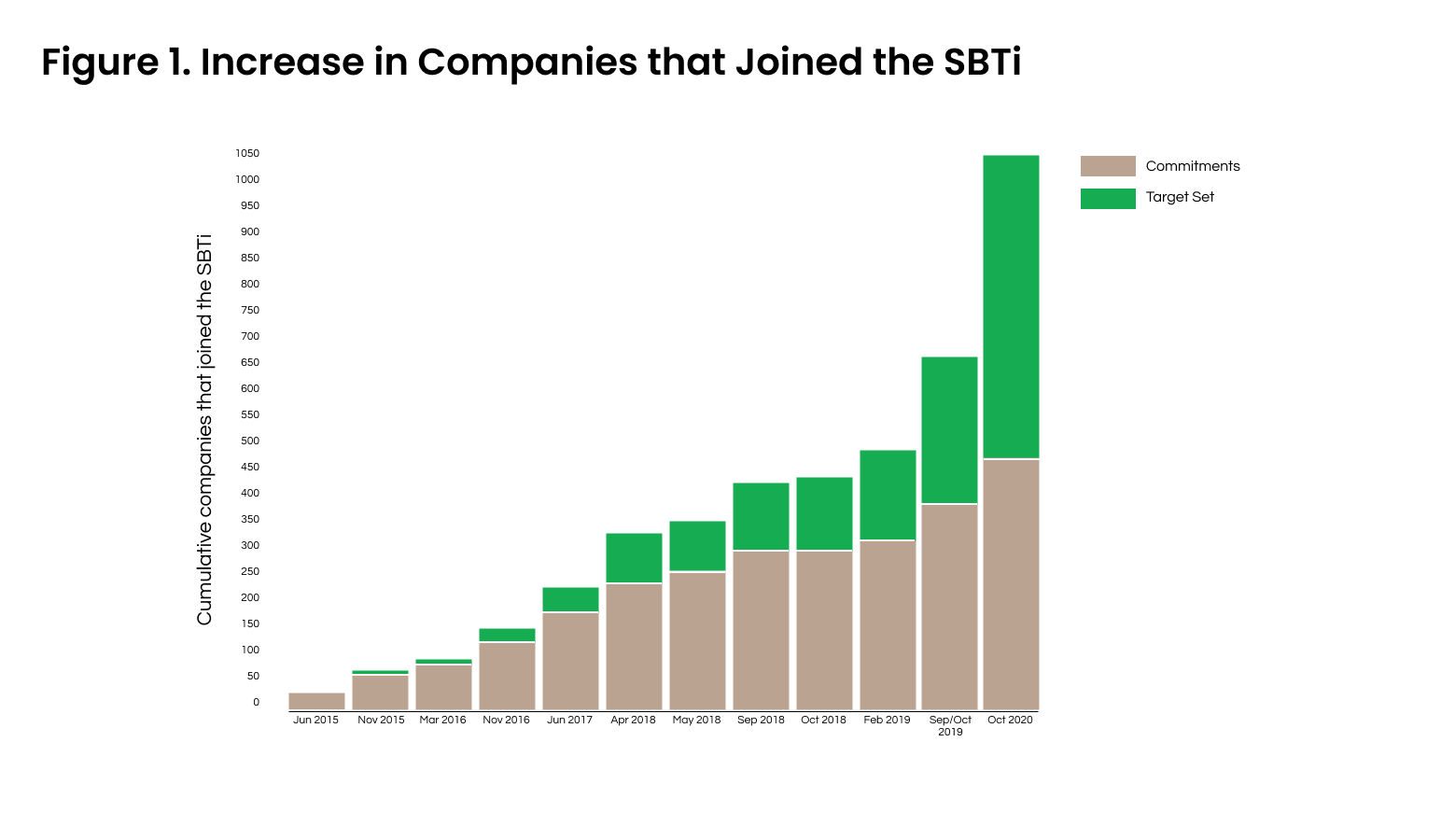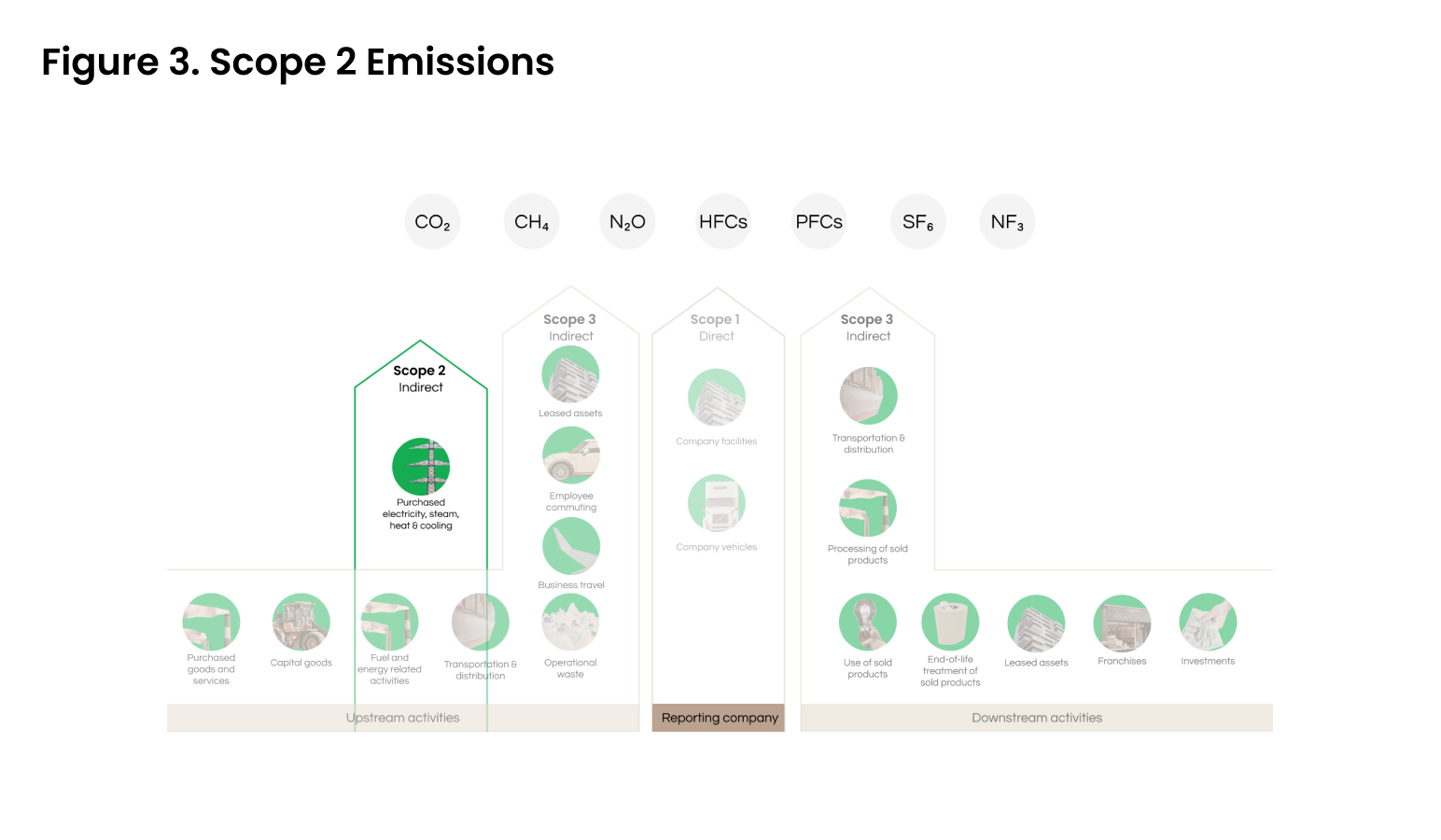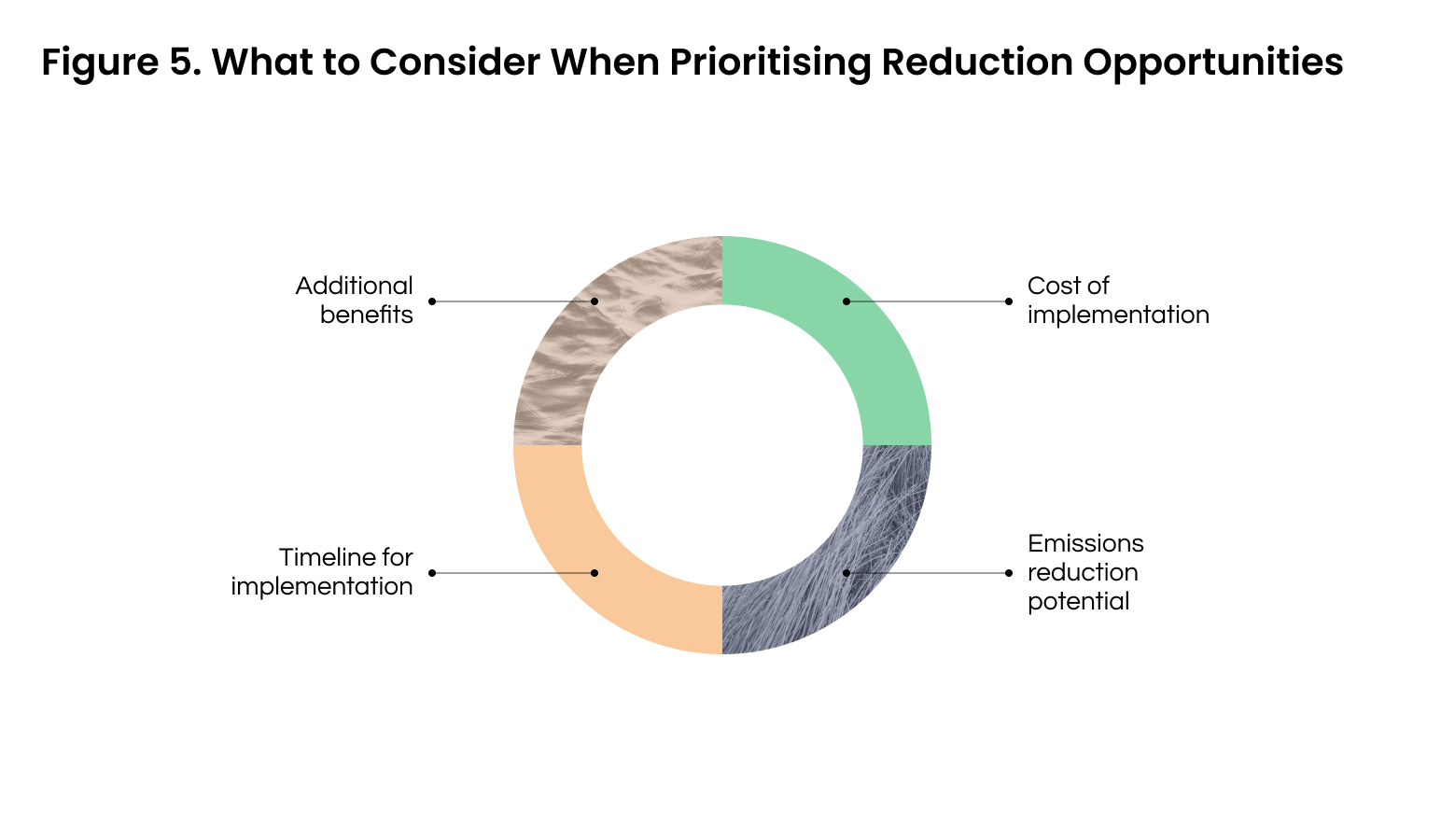Emissions Reduction Strategies and How to Decarbonise

Let’s assume your organisation has measured overall Greenhouse Gas emissions, understands its environmental impact and has set ambitious targets for emission reduction on all or some of the emitting sources. Even better, reduction targets have been validated by the Science-based Target Initiative (SBTi), endowing them with further recognition. Specific emission reduction targets will indeed give you, and people working in your organisation, strong goals to guide all future decision-making processes and business activities.
Today, more than 1250 organisations around the world have set SBTs in line with the Paris agreement. But how are they going to achieve these targets? As an organisation, you might have also found yourself asking the question: How do I reduce my overall carbon footprint and achieve my targets in the short and long term?
 We know that most of an organisation's emissions are linked to the energy that is produced and consumed to fuel production activities. With a focus on energy, this article will suggest some emission reduction opportunities for all emitting sources, and what to keep in mind when prioritising solutions.
We know that most of an organisation's emissions are linked to the energy that is produced and consumed to fuel production activities. With a focus on energy, this article will suggest some emission reduction opportunities for all emitting sources, and what to keep in mind when prioritising solutions.
By implementing these actions, you will not only contribute to the achievement of a net-zero society – you will also improve your reputation and anticipate changes in technology, regulations and customers’ behaviour.
Opportunities to reduce scope 1 emissions
When we talk about scope 1 emissions, we are referring to all those GHGs emitted by owned or controlled stationary and mobile sources, such as machinery and vehicles owned or leased by your employer to conduct your business activity.

Some opportunities to reduce emissions from scope 1 are:
- Energy efficiency. Less energy consumption = less GHG emissions. As simple as it is.
How? By switching to machinery, vehicles, or equipment that consumes less energy for the same outcome. You will not only reduce your energy consumption – and your bill – you will also avoid the combustion of fuels for energy production, and therefore the release into the atmosphere of GHGs from the combustion. That is the case when you decide to buy a more fuel-efficient truck or boiler for heating production.
- Switch to alternative fuels and renewable energy sources. By using electricity or other fuels rather than fossil fuels, such as biomass and biofuel, no or very low emissions will be generated at the combustion phase. Some examples:
- Purchase or lease electric vehicles instead of petrol cars.
- Adapt equipment to function with electricity and avoid the combustion of fossil fuels.
- Use biomass instead of natural gas to generate heat.
An example: UPS has a commitment to purchase up to 10,000 electric vehicles in 2020, which will allow reducing emissions from its fossil fuel combustion (read more here).
Opportunities to reduce scope 2 emissions
Indirect emissions from the generation of purchased electricity, steam, heating, and cooling are included in scope 2.

Some opportunities to reduce emissions from scope 2 are:
- Purchase electricity and heating, cooling and steam from suppliers making use of renewable sources. When an energy supplier can ensure that its product has been generated by renewable sources, such as electricity from wind turbines, it will be able to reduce emissions from the production phase.
- Energy efficiency. In addition to what was mentioned for scope 1 emissions reduction, by adopting energy-efficient equipment, your organisation will also be able to reduce its dependency on energy and its providers, therefore avoiding emissions for the generation of such energy.
- Install solar panels on the roof of your facility to produce your own electricity and avoid emissions from electricity providers elsewhere.
An example: Ferrero is on a path to sourcing 100% green electricity for its plants, which will contribute to reaching the 2030 goal of cutting the emissions from its operations by 50% (read more here).
Opportunities to reduce scope 3 emissions
Scope 3 emissions include all other indirect emissions that occur throughout the value chain (upstream and downstream), which are split into 15 different categories. These include business travel, upstream and downstream transportation and distribution, capital goods, and processing of sold products. In most cases, scope 3 accounts for most of the total company’s GHG emissions.
Emissions reduction strategies in Scope 3 are definitely the most challenging ones to tackle. Because of a lack of direct control over the sources of these emissions, companies need to think out of the box and pursue collaboration with all actors in their value chain – from raw materials extractors to the end consumers.

Some opportunities for carbon reduction from scope 3 are:
- Engagement with the supply chain through events, workshops and webinars, to raise awareness among suppliers and persuade them to adopt no or low-carbon solutions.
- Design for cyclability and adopt a circular model. Activities aimed to make better use of waste through recycling or to design products with a longer lifetime and recyclable. By doing so, your amount of waste will be reduced and emissions from the treatment of such waste avoided.
- Use resources in a more efficient way. By reducing the number of resource inputs into your activity, emissions from the extraction, processing and transport of such resources will be avoided.
- Adopt sustainable criteria in your procurement activities and purchase lower-carbon goods and services.
- Reduce business travel and employee commuting. Adopt strategies to minimise the use of single-occupant vehicles, provide information on alternative transportation (such as bus, train, bike-sharing, or personal mobility routes) to employees, and install bicycle racks for employees and visitors.

An example: Lloyds Banking Group provides a Green Salary Sacrifice scheme which enables employees to take advantage of significant tax benefits when leasing an electric vehicle. The Group is also rolling out electric vehicle charging points across the company’s car parks (read more here).
Decarbonise your business
Not all the above-mentioned GHG reduction strategies are feasible or needed in every organisation. Both because the emission hotspots to be tackled might differ from one to the other, and some reduction solutions might be more or less feasible for companies operating in different sectors. Once you have a list of possible reduction strategies, the following should be determined for each opportunity:
- The cost of implementation;
- The emissions reduction potential;
- The required timeline for implementation;
- Additional benefits on community wellbeing, natural conservation and technological development, to name some.
This information will allow you to calculate the potential climate return on investment for each opportunity and to prioritise the most climate and cost-effective solutions in line with your activity.
Conclusion
In general, companies start reducing carbon emissions that are closer to the core (Scope 1 and 2 emissions). That is because such emissions are generated by sources they own or control, therefore easier to tackle. By contrast, Scope 3 emissions are the least targeted and most challenging to control ones, because generated by sources not directly owned by the business - such as raw material extraction and logistic.
However, in most cases, Scope 3 emissions can account for more than 50% of an organisation's total GHG emissions. That is why it is very important to intensify efforts to refine calculation methods and reduction strategies of Scope 3 emissions.
Reducing your carbon footprint will not only allow you to contribute to a sustainable future for all. You will be able to thrive in a continuous changing world, by meeting your stakeholder expectations and reducing the risk of higher costs and regulations linked to climate change.
So why not start now? Be a front runner and an example to your peers. Put into action your strategy and targets. Let’s not waste time, let’s reduce now!